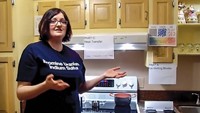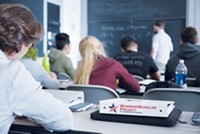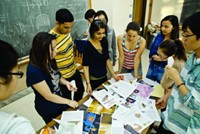Advertisement
Grab your lab coat. Let's get started
Welcome!
Welcome!
Create an account below to get 6 C&EN articles per month, receive newsletters and more - all free.
It seems this is your first time logging in online. Please enter the following information to continue.
As an ACS member you automatically get access to this site. All we need is few more details to create your reading experience.
Not you? Sign in with a different account.
Not you? Sign in with a different account.
ERROR 1
ERROR 1
ERROR 2
ERROR 2
ERROR 2
ERROR 2
ERROR 2
Password and Confirm password must match.
If you have an ACS member number, please enter it here so we can link this account to your membership. (optional)
ERROR 2
ACS values your privacy. By submitting your information, you are gaining access to C&EN and subscribing to our weekly newsletter. We use the information you provide to make your reading experience better, and we will never sell your data to third party members.
Environment
Kids' Books Ease Path To Science
ACS Meeting News: When linked with children’s literature, science grows less intimidating for elementary school teachers
by Sophie L. Rovner
September 20, 2010
| A version of this story appeared in
Volume 88, Issue 38

“Elementary school teachers are very comfortable teaching reading and language arts skills, but they are not very comfortable with science,” according to Lynn M. Hogue, an educational consultant who recently retired from her position as associate director of the Center for Chemistry Education (CCE) at Miami University, in Ohio.
The solution? Use children’s books to bridge the gap between the two subjects. The idea is to draw on teachers’ strengths in literature instruction “and then bridge over to science experiments that go with the literature,” according to Hogue. Elementary teachers who are interested in the technique attend training sessions held around the country, during which they carry out experiments that their students will later perform. In learning how to teach the experiments to students, the teachers get past their own fear of science and even experience some of its pleasures.
Hogue described the science-literature method during a symposium on teaching science to elementary teachers, which was part of the Division of Chemical Education’s program at last month’s American Chemical Society national meeting in Boston.
The sci-lit method was developed in the early 1990s by CCE staff and classroom teachers; the project was funded by the Ohio Board of Regents and the National Science Foundation. Hogue and former CCE director Arlyne (Mickey) Sarquis continue to teach the course through Terrific Science, a Cincinnati-based business they run that provides professional development for teachers throughout the U.S.
The company’s website features links to several resources, including “Teaching Physical Science through Children’s Literature.” Written by Sarquis and two colleagues, the book offers 20 lessons for teaching hands-on, discovery-oriented physical science using children’s fiction and nonfiction books as an integral part of the instruction.

The Terrific Science website also offers an extensive list of children’s books that can be linked to specific science activities and topics. One example is “Seven Blind Mice,” which Hogue described as an adaptation of the classic tale about blind men trying to identify an elephant by touch.
In the associated experiment, known as “Feely Balloons,” the teacher fills balloons—out of sight of the students—with substances such as dry beans, rice, or corn starch and then ties them off. “The children then have to manipulate the balloons and use their sense of touch to decide what is in each of the balloons,” Hogue said. The experience accustoms children to making observations and comparisons, which are key skills needed in science.
In the experiment “Scent of a Mystery,” a couple of drops of extracts such as peppermint or vanilla are placed in balloons that are then blown up and tied off. Children pass the balloons around and try to recognize the scent. In the related book, “Is Your Mama a Llama?” a young llama searches for its mother—a task that depends on the sense of smell for many animals.
In another experiment, kids tie two pieces of string to a wire hanger, put the ends of the strings in their ears, and then bang the hanger on a table. The resulting vibrations make the apparatus sound like Big Ben when it chimes.
During a training session in Conroe, Texas, the teachers enjoyed devising testable questions associated with the various experiments, Hogue said. In the Big Ben experiment, for instance, they tested the effects of padding the hanger, changing the length of the string, and using plastic bottles attached to the ends of the string as amplifiers.
Upon returning to their own classrooms, the teachers encouraged their students to come up with similar testable questions. They also incorporated writing instruction into the lessons by teaching the students to record their observations.
Hogue and Sarquis evaluated children before and after the kids went through the program. Initially, when asked to sketch a scientist, they drew a stereotypical mad scientist. “But after the program,” Hogue said, “a lot of them drew themselves.”





Join the conversation
Contact the reporter
Submit a Letter to the Editor for publication
Engage with us on Twitter